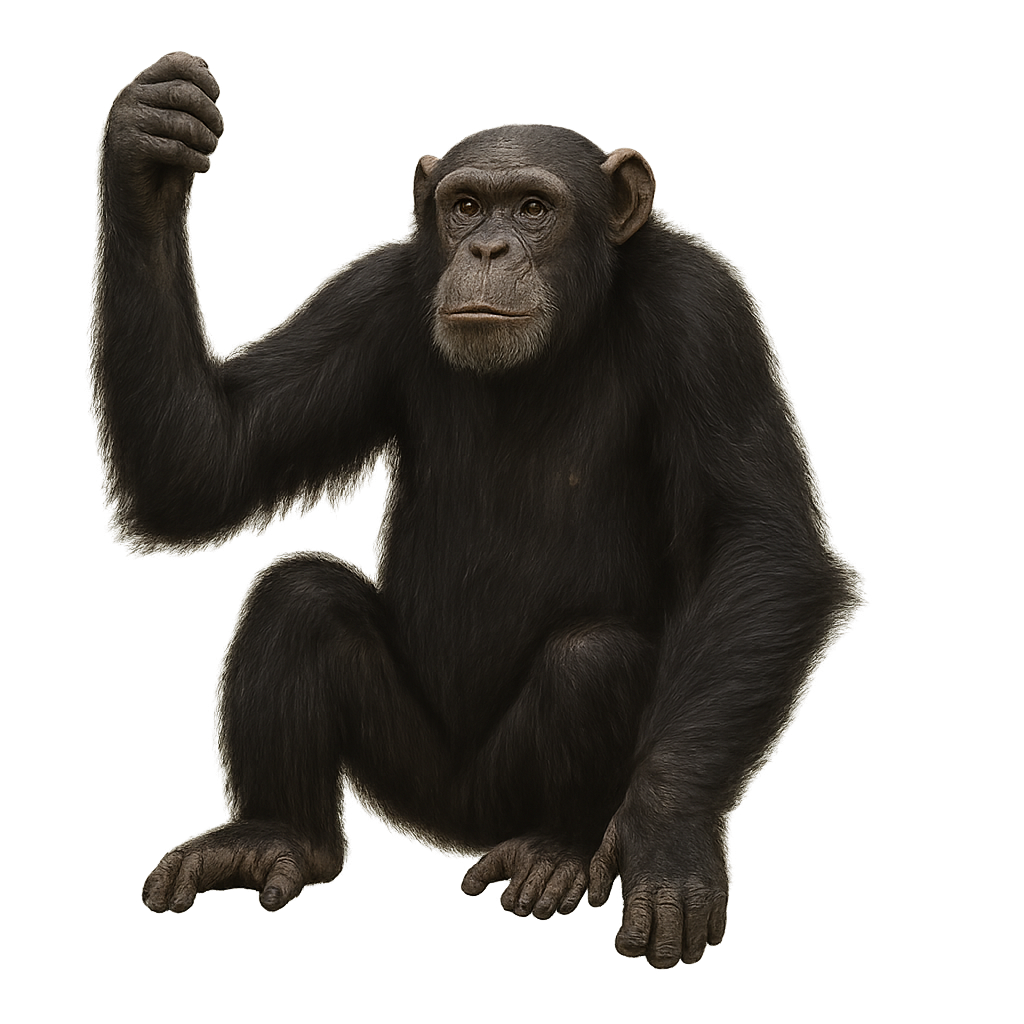Your wildlife photography guide.
Explore the eastern chimpanzee in detail, study its behavior, prepare your shots.
Where to observe and photograph the eastern chimpanzee in the wild
Learn where and when to spot the eastern chimpanzee in the wild, how to identify the species based on distinctive features, and what natural environments it inhabits. The WildlifePhotographer app offers tailored photography tips that reflect the eastern chimpanzee’s behavior, helping you capture better wildlife images. Explore the full species profile for key information including description, habitat, active periods, and approach techniques.
Eastern Chimpanzee
Scientific name: Pan troglodytes schweinfurthii

IUCN Status: Endangered
Family: HOMINIDAE
Group: Mammals
Sensitivity to human approach: Suspicious
Minimum approach distance: 10 m
Rut period: October to December
Gestation: 230-240 jours
Births: May to June
Habitat:
Tropical forests, wooded savannas
Activity period :
Primarily active during the day, with peak activity in the morning and late afternoon.
Identification and description:
The Eastern Chimpanzee, or Pan troglodytes schweinfurthii, inhabits the tropical rainforests of Central and East Africa. Known for their remarkable intelligence, tool use, and complex social structures, these primates live in communities of up to 150 individuals led by an alpha male. Their omnivorous diet includes fruits, leaves, insects, and occasionally meat. Eastern chimpanzees communicate through a variety of vocalizations, gestures, and facial expressions. Unfortunately, they are threatened by deforestation, poaching, and diseases, leading to a significant decline in their population over recent decades.
Recommended lens:
400 mm – adjust based on distance, desired framing (portrait or habitat), and approach conditions.
Photography tips:
When photographing the Eastern Chimpanzee, it's crucial to maintain a safe distance of at least 10 meters to avoid disturbing their natural behavior. Use a telephoto lens of 400mm or more to capture detailed images without getting too close. Be patient and wait for the chimpanzees to become comfortable with your presence. Observe their behavior and try to capture moments of social interaction or tool use. The natural light of the morning or afternoon is ideal for well-lit and contrasted photos.
The WildlifePhotographer App is coming soon!
Be the first to explore the best nature spots, track rutting seasons, log your observations, and observe more wildlife.
Already 1 439 wildlife lovers subscribed worldwide

